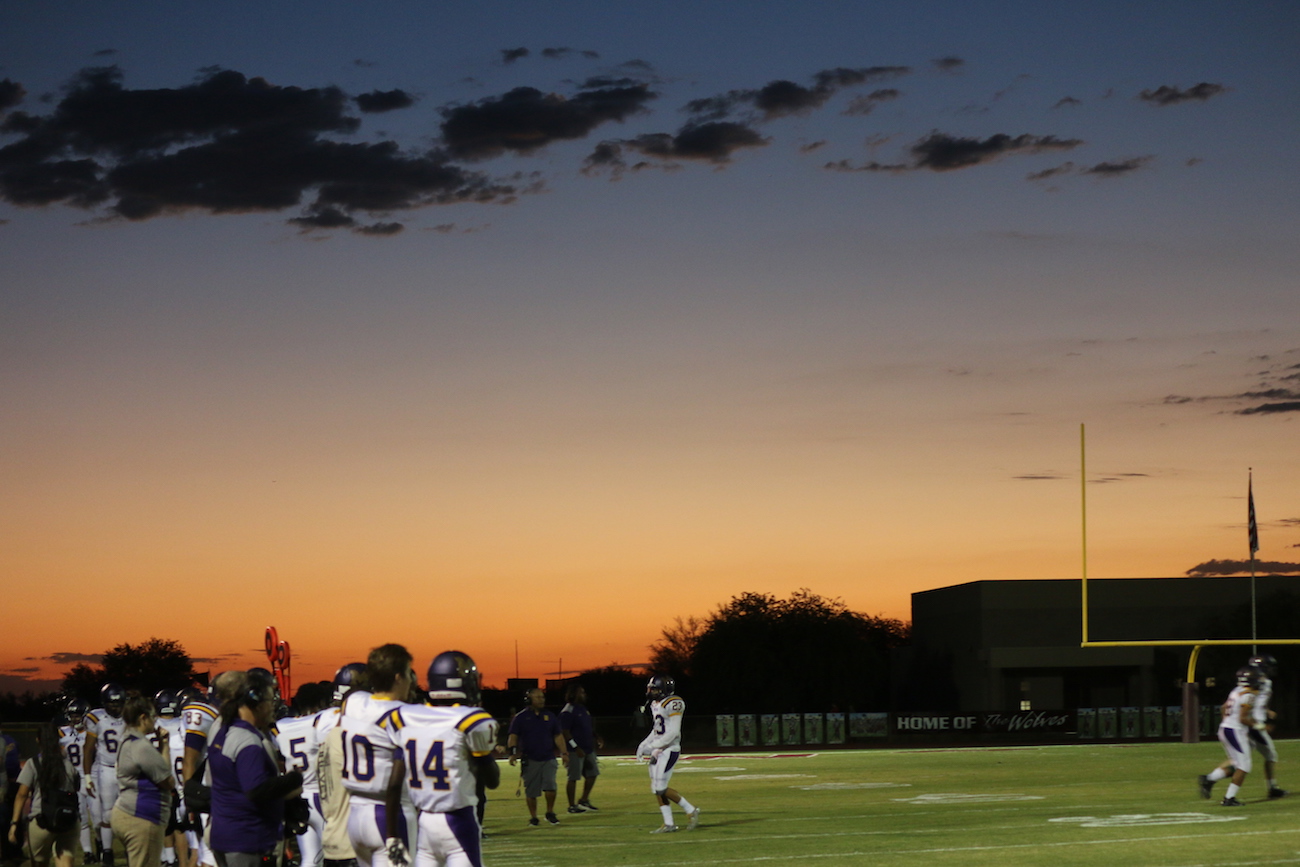The Open Division worked.
The juggernauts of the 4A, 5A, and 6A Conferences were removed from the State Tournaments and created parity and intriguing games while the best teams in the state were given an opportunity to prove they were the undisputed best team in Arizona. For the first time in several years, every conference tournament seemed impossible to predict.
There was competitive balance in the tournaments. Most impressive of all, with the removal of Saguaro and Salpointe Catholic, almost every game of the 4A Tournament was exciting and winners from the quarterfinals and onward only won by an average of seven points per game. From what the AIA is saying, it sounds like the Open Division Playoff is here to stay.
The next idea to bringing more competitive balance to high school football, while allowing the best of the best to duke it out at the end of the year, has arrived. A realignment of just football programs, based on a team’s past three years of success and competitiveness, was approved on Wednesday. It appears the goal is to move the best teams in the state to the 6A Conference in a matter of a couple of years to tier the conferences based on talent/competition.
Initial team placement for 2020-21 football conferences. Teams can appeal initial placement. pic.twitter.com/zpV0rFKiEM
— Jose E. Garcia (@AZPreps365Jose) December 11, 2019
The Open Playoffs and the new realignment ideology both have the same goal; Make the season and postseasons more competitive, and most importantly, have the best teams in the state compete against each other regardless of enrollment numbers. The problem is, these philosophies achieve this using drastically different methods that contradict one another.
The Open Division was made to allow programs to compete in their conference with programs having similar enrollment, then deciding at the end of the year which programs like Saguaro, Salpointe, and Centennial, will play the best 6A big school programs in the postseason. Conversely, realignment doesn’t care about enrollment, it just wants to move teams together in the conferences based on talent and success and the best teams to 6A.
The new realignment method allows teams to only move up one conference per year and is set to realign teams every year. That means heavyweights like Centennial and Saguaro should be in 6A by 2021. If the best teams in the state are moved up to 6A, why would there be a need for an Open Division?
Currently, the 6A Conference will host 39 teams in 2020. If the goal is to move the best teams into 6A, it should be completed after just two offseasons of realignment (great 5A teams to 6A in 2020, other 5A teams and great 4A teams to 6A by 2021). To me, that should mean the 6A Conference should contain at least the most talented 20 programs in the state by the 2021-2022 school year. The teams’ goal should be to make it to the 6A Conference to prove they’re one of the best. So wouldn’t the Open Division just be the top eight in the 6A Tournament?
False. If they use same formula, 2 will score enough points by beating other 4A teams.
— Gridiron Arizona (@gridironarizona) December 11, 2019
Only Saguaro, Salpointe Catholic, and Horizon are members of the inaugural Open Playoff who aren’t now in 6A, but they can make the jump to 6A next offseason. Not to attack smaller teams, but 4A programs like Sahuaro (Tucson), Cactus, ALA – Queen Creek, or Peoria shouldn’t face a team like Chandler or Centennial for their first-round game to end their seasons if they were somehow placed in the 2020 Open Playoff from 4A.
No one knows the algorithm the AIA uses to formulate the weekly power rankings, but it was argued this past season that it focuses too much on comparing schools to just its own conference. Essentially, this formula made a 3A team like Benjamin Franklin rate higher overall in power points than 6A powerhouse Chandler midway through the year. If this same formula is used this season, it could say 4A teams should be in the Open because of how that team performed compared to similar conference members.
We’re on a collision course to another major change in high school football. These two philosophies can’t coexist, they virtual negate one another, defeating their purpose. The Open allows conferences to be aligned by enrollment but this new realignment system ignores enrollment as long as programs are successful. Drastic changes or the removal of the Open after just two years, or another major realignment after all these changes are made, just like after the Super Division I in 2015, appears imminent. The fact is, we’ll once again see a major change in Arizona high school football sooner or later.
No matter what the AIA tries, it will never be possible to make everyone happy, ranking 131 schools into three 16-team tournaments and now an eight-team super playoff. Any problems with this conflict could all be worked out behind the scenes with just a change of the formula or scheduling. Similarly, the Open Division was initially based on MaxPreps rankings, until the AIA used their own system instead and that plan just popped up midseason.
VIDEO: Chandler Wins Open Division Championship https://t.co/SknWi9phVg #FridayNight360AZ
via @Sports360AZ @chandler_wolves @GarretsonRick pic.twitter.com/ZXq5zYxeRT
— Jordan Hamm (@JordyHamm) December 8, 2019
Personally, I’ve been a fan of the AIA keeping all teams of a school to reside in the same conference. It forces schools, programs, and athletic directors to become familiar with one another. It allows multi-sport athletes to make bonds with fellow athletes they’ve seen on the other bench for four years of their young adulthood that can go far beyond high school.
I’ve seen schools and student bodies develop pseudo-rivalries between each other through competitive games in multiple sports even if the schools aren’t geographically close, especially if football is one of those sports. In my mind, keeping the alignment based on enrollment was alright with the inclusion of the Open Division Playoff. Maybe small things like freedom scheduling or ‘independent’ regions, like Notre Dame in College football, could have been put in place to avoid the oncoming conflict of Open Divison vs. realignment.
David Hines and the AIA has so far done a great job of rolling with the punches and working to find good resolves to interesting problems. With the success of the Open Division, I have no reason to distrust any of the AIA’s decisions. This could all be part of their plan to make another change soon. I’m more than willing to sit back and watch how the next couple of seasons play out and how the landscape of high school football will change based on the happenings of this past month alone. All I have to say right now, is I better see Liberty vs Centennial back on my football schedule in 2020.
The 2019 AZHS football season and year as a whole was littered with incredible stories and performances. @EricSports360AZ chronicled some of his favorites via @Sports360AZ READ: https://t.co/dWJm1ylaAt #FridayNight360AZ pic.twitter.com/ttDx7AY0f6
— Sports360AZ (@Sports360AZ) December 13, 2019



